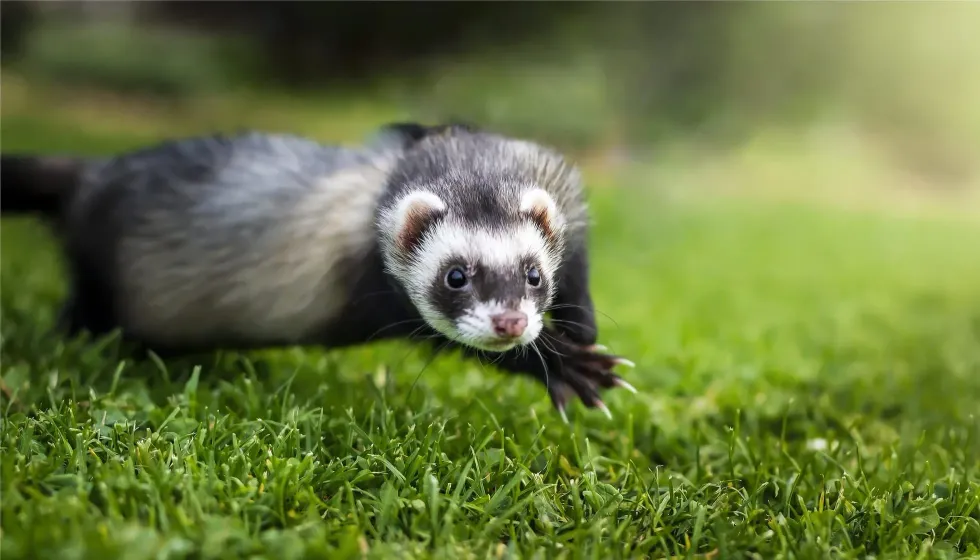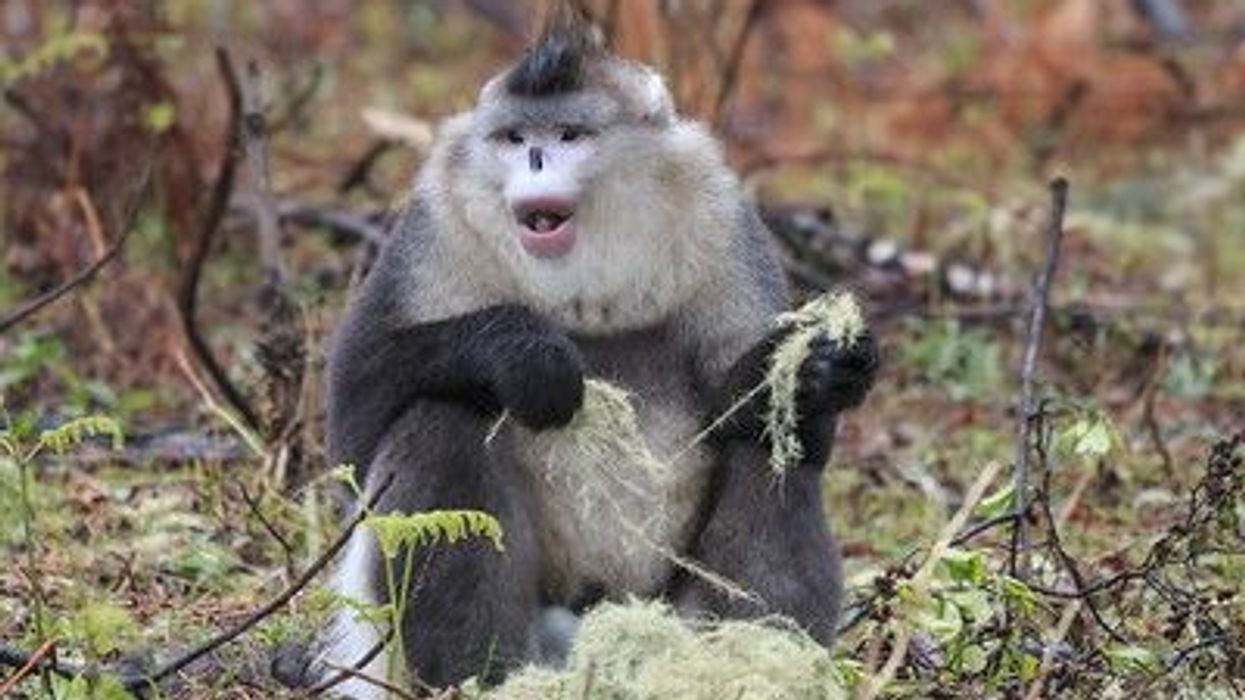The Chinese ferret-badger is a mammal and a mustelid native to the continent of Asia. It is most common in the northeastern Indian state of Assam and central and southern parts of China.
This mammal can also be found in the Indo-China counties of mainland Southeast Asia. The Chinese ferret-badger tolerates human presence fairly well and does not cause much disturbance.
This ferret-badger inhabits tropical rainforest and grasslands and also rice, cotton, and soybean fields. They are not very territorial and live for 10-17 years.
Chinese ferret-badgers are not territorial but rather nomadic. The Chinese ferret-badger size is the smallest among the badger species and they are mostly gray-brown in color.
The WHO has identified the Chinese ferret-badger species as a possible intermediary for the SARS-CoV-2 virus-carrying bats of the southeastern China region. They are a species of Least Concern according to the IUCN and have stable populations despite being hunted heavily.
For more relatable content, check out these flying squirrel interesting facts and badger facts for kids.
Chinese Ferret-Badger Interesting Facts
What type of animal is a Chinese ferret-badger?
The Chinese ferret-badger (Melogale moschata) is a mustelid and mammal.
What class of animal does a Chinese ferret-badger belong to?
The Chinese ferret-badger (Melogale moschata) belongs to the Mammalia class of animals.
How many Chinese ferret-badgers are there in the world?
The exact number of Chinese ferret-badgers (Melogale moschata) in the world is not known since their populations are widespread in many places across their habitat range. Their overall population is stable.
Where does a Chinese ferret-badger live?
Chinese ferret-badgers (Melogale moschata) are found in the northeastern parts of India and in the southern and central parts of China. They are also found in the northern Indo-China region, consisting of mainland Southeast Asian nations. These countries are Cambodia, Laos, Malaysia, Myanmar, Thailand, and Vietnam. They are native to places like Hainan Island, Assam, Taiwan, and Hong Kong.
What is a Chinese ferret-badger's habitat?
Chinese ferret-badgers are found in subtropical and tropical forests, rainforests, grasslands, open forests, rice paddies, cotton, soybean and grass fields, rock piles, firewood stacks, farmlands, and vegetable gardens.
Who do Chinese ferret-badgers live with?
Chinese ferret-badgers are solitary animals. They are known to establish home ranges in their habitat averaging 26 acres (0.11 sq. km). The male and female home ranges sometimes overlap, so these ferret-badgers are not territorial. They are rather nomadic and move resting spots a lot.
How long does a Chinese ferret-badger live?
The Chinese ferret-badger lifespan is 10-17 years.
How do they reproduce?
Chinese ferret-badgers reproduce by mating and giving birth to live ones.
The breeding season is not set and mating takes place throughout the year. Most cubs or kits are born in May to June and September to October.
On average, two to three cubs are born in a single litter. The nesting site is in burrows. The cubs are fed by their mothers until they are two or three years old.
What is their conservation status?
The conservation status of the Chinese ferret-badger, or the small-toothed ferret-badger, species according to the International Union for Conservation of Nature is Least Concern.
Chinese Ferret-Badger Fun Facts
What does a Chinese ferret-badger look like?
The Chinese ferret-badger has the smallest body among badgers. On the dorsal side of its body, it is colored dark-brown, grayish-brown, to fawn-brown. On its undersides, it is an orange to white color.
This mammal has a black face and white forehead along with a variable, dark mask. The Chinese ferret-badger has a bushy and long tail, and big ears.
The body is slender and the fur is short. The back has a stripe down its middle and there is a spot on the head's crown. The length of the tail is 5.9-9.1 in (15-23 cm).
How cute are they?
Chinese ferret-badgers are small in length and adorable. These animals have short grayish body fur with paler undersides and big ears. They are very small and look cute and cuddly but they can cause rabies, so you must keep your distance from these wild badgers
How do they communicate?
Chinese ferret-badgers utilize tactile and chemical forms of communication. They communicate by touch and smell. If threatened by predators, they emit secretions from their glands under the tail that produce a foul off-putting smell.
How big is a Chinese ferret-badger?
Chinese ferret-badgers are 11.8-15.8 in (30-40 cm) in length, which makes them two to three times smaller than wolverines and about the same size as long-tailed weasels.
How fast can a Chinese ferret-badger run?
The exact speed of the Chinese ferret-badger species is not known but since they are ferret-badgers, they may run at speeds of 15.5-18.6 mph (25-30 kph).
How much does a Chinese ferret-badger weigh?
Chinese ferret-badgers weigh 2.2-6.6 lb (1-3 kg).
What are the male and female names of the species?
Males and females of the Chinese ferret-badger species are called boars and sows respectively.
What would you call a baby Chinese ferret-badger?
A baby Chinese ferret-badger is called a kit or a cub.
What do they eat?
The Chinese ferret-badger diet consists of earthworms, small amphibians, insects, invertebrates, other worms, and fruits like Chinese plums, date-plums, oriental raisin trees, and Chinese kiwis.
Are they poisonous?
Chinese ferret-badgers are not directly dangerous, but they have been known to cause outbreaks of rabies in southeastern China. They are widely hunted so people may come into contact with them but there have been no deaths due to rabies caused by these ferret-badgers.
There is no vaccine either. Also, the Chinese ferret-badger species has been identified by the World Health Organization as a probable species that may have acted as an intermediary when coming into contact with SARS-CoV-2 hosting bats of the borderlands of Southeast Asia.
Would they make a good pet?
No, they would not make a good pet. They are known to tolerate human presence well and they also acclimatize to human habitats.
They make use of man-made sites like rock piles, firewood stacks, farmlands, and gardens for resting and feeding. However, they are still wild animals that can carry the threat of diseases, so they should not be kept as pets.
Did you know...
The diet of these animals consists of insects, small animals, fruits, and worms.
Chinese ferret-badgers are not widely eaten since their meat is inedible and they may have strong odors too. Chinese ferret-badger pelt is not considered to be expensive or desired either.
Ferret-badgers are small mustelids that are mostly grayish-brown, white, and red in color.
The mustelid family consists of weasels, otters, badgers, ferrets, wolverines, martens, minks, and others.
Some households in the native habitat range invite Chinese ferret-badgers into their huts and homes so that they can feed on nuisance-causing pests like cockroaches.
What are the different types of ferret-badgers?
There are six different species of ferret-badgers. They are the Bornean ferret-badger, Formosan ferret-badger, the Chinese ferret-badger, the Burmese ferret-badger, the Javan ferret-badger, and the Vietnam ferret-badger.
Are Chinese ferret-badgers endangered?
No, Chinese ferret-badgers are not endangered. They are a species of Least Concern as reported by the IUCN. This is because they have stable populations in their habitat.
Here at Kidadl, we have carefully created lots of interesting family-friendly animal facts for everyone to discover! Learn more about some other mammals from our black-footed ferret fun facts for kids and river otter interesting facts pages.
You can even occupy yourself at home by coloring in one of our free printable Chinese ferret badger coloring pages.









